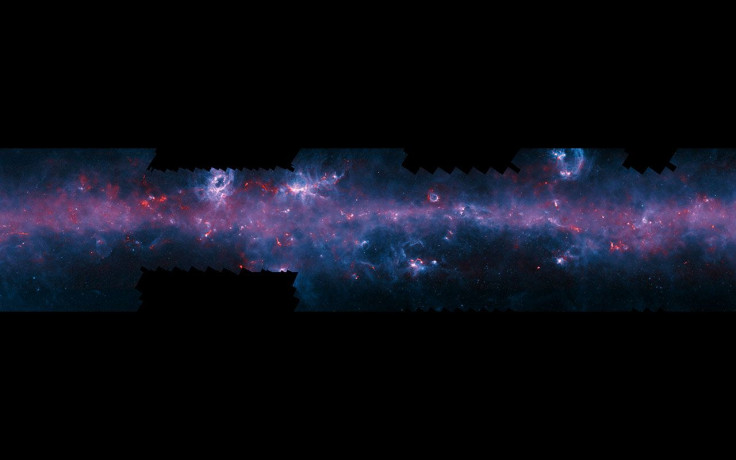How Big Is The Milky Way? Arm Containing Our Solar System Is Much Bigger Than We Thought

Astronomers have made a new finding about the part of the Milky Way galaxy containing our solar system: it is four times larger than experts previously estimated. In a new study, published in the journal Science Advances, the team of international astronomers measured the spiral region housing our solar system—called the Local Arm—to be more than 20,000 light-years long.
The Milky Way contains four major spiral arms (Perseus, Scutum-Centaurus, Sagittarius, and Outer arms) that are each filled with stars, gas and dust. New stars are born in these arms. Our solar system lies in a smaller spiral, the Local Arm, located near Perseus.
Using the National Radio Astronomy Observatory’s Very Long Baseline Array of telescopes in New Mexico, the team gathered data about the radio emissions in eight regions around the Local Arm, which is also called the Orion Spur, to assess where the star-forming regions were.
“Radio telescopes can ‘see’ through the galactic plane to massive star forming regions that trace spiral structure, while optical wavelengths will be hidden by dust,” said Ye Xe, from from the Chinese Academy of Sciences, to New Scientist. “Achieving a highly accurate parallax is not easy.”
From this data, coupled with previous measurements, they were able to conclude that the Milky Way does not have well-defined arms. Instead, it is a spiral shape with branches. They were also able to calculate the distance from Earth.
"When we actually measured distances in the Local Arm we were surprised," Mark J. Reid, co-author of the study and an astronomer at the Harvard-Smithsonian Center for Astrophysics in Cambridge, Mass., told National Geographic. "A lot of the material that we thought was in a nearby arm was actually in the Local Arm."
Mapping the Milky Way is difficult due to our location, as Earth is located in the center of it making it challenging to identify clusters of stars. According to Reid, it would take 100,000 years to send a spacecraft above the Milky Way to take a picture and another 100,000 years to transmit the image back to Earth.
"The fundamental problem for the Milky Way is that it's a disk-like system and we're inside the disk," Reid told the The Christian Science Monitor. "Let's say you have a disk and you paint a spiral pattern on the top of it. When you turn the disk sideways and look at it, you can't see that spiral pattern."
In comparison to the four other spiral arms in the Milky Way, the Local Arm pales in comparison—other arms can be up to five to six times the length. But the new measurements shed more insight into what our Milky Way looks like.
Astronomers only accepted that the Milky Way is a spiral 150 years ago, reports New Scientist, and the arms were identified in the 1950s. The recent study was able to build on the existing knowledge by unveiling key facts: the Long Arm is larger than previously believed, and its pitch angle and star formation rate is similar to that of Sagittarius and Perseus.
© Copyright IBTimes 2025. All rights reserved.






















